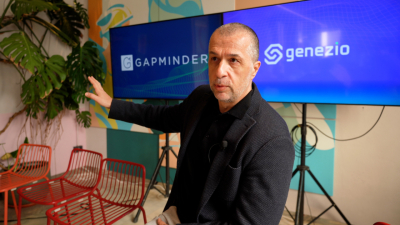Despite the global financial crisis, executives still have businesses to run. There’s no time to wait for the economy to work its way out of this crisis. Considering the macroeconomic perspectives, leaders face a number of crucial issues as they guide their organizations through these stormy times, reads AT Kearney study.
But what should be done first? While some strategies might be right for your company today, unforeseen negative consequences could have a lasting impact depending on how the crisis plays out.
The following are 12 suggested area of focus that can yield powerful results in the current economic climate, each area described briefly by AT Kearney advisors.
1. Get smart with your marketing spending
Like it or not, marketing makes the commercial world go ‘round, and its becoming an increasingly expensive rotation. The key to controlling this expense is simple: effective stewardship of marketing expenditures can easily save 10 to 15% of a company’s total marketing budget – and that’s a lot to fund a lot of exciting activities to the bottom level.
According to AT Kearney, smart spending begins in three areas:
Analyze your media spending. Fact-based decision-making and the level of analysis that procurement experts commonly use to measure price and volume relationship in other spending categories can be easily applied to media.
Work with your ad agency. Understand the process of creating and delivering great advertising – and identify where your current processes might be falling short.
Improve advertising production. Hard data on actual commercial production expenses provides the best foundation for driving production decisions and negotiating costs.
2. Break the classic rules of pricing
Are you focusing on your customers’ ability to pay rather than willingness to pay? If so, you are not alone. Market research and traditional go-to-market analyses are popular ways to measure ability to pay.
Discounting remains a good method for price discrimination, but without a clear strategy and controls, potential benefits are often replaced by lost revenue.
A good pricing methodology should be neither complex nor academic, but rather a structured way of thinking strategically about practical issues and identifying opportunities to raise prices by deliberately breaking the classic rules of pricing. And what better time to break the rules than in a global financial meltdown?
3. Get creative with customer interactions
In a world with few distinctions among products, quality and prices, it is customer interaction that is a source of differentiation.
Field sources are frequent early target to cut costs fast. While they might produce a short-term margin lift, the improved margins come at the expense of long term growth and shareholder value. The outcome is not always positive, as customer relationship crumble.
4. Gain control of out-of-control complexity
Complexity must be controlled so companies have a clear path to the next growth frontier. Now is the time to take a step back and deal with those challenges by:
- Adopting a strategic view on complexity – don’t just cut the stock-keeping unit’s tail, but optimize the overall product portfolio based on customer needs
- Creating the appropriate transparency on revenue and the cost impact on complexity
- Taking a comprehensive value chain perspective
- Installing the right processes and governance to ensure sustainable growth.
5. Streamline Research and Development
Innovation and R&D go hand-in-hand, and never more so than when the economy falters. AT Kearney consultants found that innovation leaders achieve roughly 70% higher earnings over a four-year period than companies without an explicit innovation focus.
The success depends on rescoping or rationalizing a significant number of R&D projects without affecting growth and future profitability.
6. Cut direct material costs
In tough times, companies often attempt to ‘squeeze the last penny’ out of their suppliers, thus opening the door to years-long confrontations. Smart companies, however, avoid the conflicts and instead try to understand their suppliers.
When both parties, buyer and supplier, engage in open and transparent analyses it spurs collaborative behavior in reducing overall price.
7. Slash indirect materials costs
When the economy sinks, so do costs. But instead of focusing primarily on suppliers and their prices, AT Kearney consultants recommend company-wide initiatives in ‘demand management’ – a proven approach to take costs out of an organization without further reducing its capacity to perform.
8. Take a tough approach on manufacturing
Manufacturers must apply techniques such as Lean or Six Sigma – that uses statistical tools, namely reduction of variation band and removal of gaps.
There are several approaches used for improving the business performance with Lean manufacturing and Six Sigma tools. The focus is on achieving tangible results quickly, rather than losing valuable time putting an elaborate program in place.
9. Eyes wide open with back-office functions
Companies often view back-office functions such as finance, IT, human resources and legal as non-valuable areas and ideal for cost cutting.
- Simplify and automate process.
- Develop an outsourcing strategy
- Source vendors agressively
- Manage demand
- Redesign and consolidate
10. Unlock liquidities
Conserving cash and managing the balance sheet are two actions that take on more importance during a downturn. Companies can unlock millions of dollars in cash flow by systematically identifying gaps and problems in the complete order-to-cash cycle.
11. Design a leveraged organization
According to AT Kearney, there are three dimensions of a leveraged organization: work smarter, work cheaper and work bigger.
12. Become a selective acquirer
Deals in downturns create more value than those made in uptu8rns. Yet success still relies on old-school tactics: identifying solid acquisition targets and confirming that those targets fir your strategy and business model.
Be smart, nimble and quick
A successful leader in a world of continuous, disruptive changes manages both the strategic and operational dynamics of a business. It is no longer enough to ‘stick to your knitting’ without having a good strategic insight into how fundamentally the business paradigm might be changing.
Citeste si:
Calculator Salariu: Află câți bani primești în mână în funcție de salariul brut »
Te-ar putea interesa și:



















































































![HR [PLAY] Tech Workout - 11...](https://www.wall-street.ro/image_thumbs/thumbs/973/973fe0a3888d417feff63de42e814180-260x260-00-65.jpg?v=1713516370)









